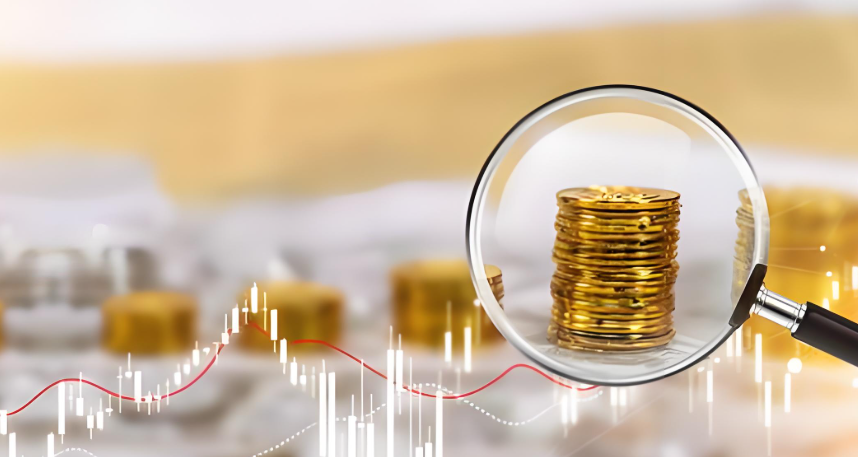Can Gold Reach New Heights Again?
Advertisements
As we progress into the year 2024, gold is undoubtedly emerging as one of the standout assets in the financial markets. It has shown remarkable resilience, buoyed by various global events that continually shake investor confidence. In a time when uncertainty reigns, the precious metals market has outshone many others, with gold prices soaring to unprecedented heights.
Investors are grappling with a complex web of influences that include the prospects of Federal Reserve interest rate cuts, escalating geopolitical tensions, and inflation hedging. These factors combined have resulted in an environment where gold shines as a beacon of stability. The increase in demand for gold, particularly from Asian markets and central banks, highlights its ongoing importance as a risk-averse choice in turbulent economic times.
Fund managers are optimistic, anticipating further hikes in gold prices throughout 2025. The backdrop of increased central bank purchases, especially from emerging markets like China, plays a significant role in driving up gold demand. Additionally, the U.S. Federal Reserve's current emphasis on monetary easing makes non-yielding assets like gold more appealing, reinforcing its historical role as a safe haven during sustained geopolitical uncertainties.
The imminent trade policies from the U.S. administration pose another layer of complexity, as these strategies may heighten inflation within the country and spill over into the global economy. Investors are poised to navigate these waters carefully, frequently considering the impact these decisions may have on gold prices as they seek to hedge against potential negative repercussions.
Moreover, the unpredictability surrounding tax policies has led to increased trepidation regarding future U.S. policy moves. Prospective tariffs could exacerbate inflation, potentially restricting the Federal Reserve's ability to lower interest rates further, thus impacting gold prices. Although gold is typically viewed as a buffer against inflation, elevated interest rates can diminish the allure of non-interest-bearing assets.
As we look ahead, the gold market will undoubtedly be influenced by various factors. Upcoming reports, including the latest U.S. inflation figures, the Federal Reserve's economic assessment known as the "Beige Book," and the influential U.S. retail sales numbers will soon shed light on market expectations.
Reviewing the recent market performance, the international gold price has seen an upward trend, hitting five-week highs. With the opening price at $2652.80 per ounce, it reached a peak of $2735.00, experiencing a closing price of $2717.40, reflective of a substantial weekly increase.

On a more granular level, developments in gold purchasing patterns reveal a strong movement among central banks, especially in November 2024, where a net increase of 53 tons was noted. This resurgence is largely attributed to the National Bank of Poland significantly upping its reserves, amplifying the overall demand for gold.
As speculation abounds regarding the Fed's monetary policy, analysts predict a modest 75 basis points cut in rates by 2025, slightly below previous forecasts. Despite these adjustments, the expectation remains more conservative compared to the broader market predictions, given the anticipated moderation of inflation rates.
During the recent week, fluctuations in gold futures were driven by shifts in U.S. Treasury yields alongside a demand for stability amid dollar volatility. Economic data from the U.S. providing insights into job openings showed an unexpected increase, underscoring the complexity of the economic landscape that is influencing gold prices.
As the third quarter begins, Chinese central bank reserves depict a steady growth trajectory, indicating a rekindled enthusiasm for gold acquisitions post a buying freeze triggered by soaring prices last year. Such signals are crucial for fostering confidence among investors as they navigate through uncertain economic forecasts.
Moreover, the tension within the global financial atmosphere fueled by geopolitical apprehensions leads to the essential role gold plays as a risk-averse asset — a trend further confirmed in reports highlighting a potential reciprocation in the effects of global economic policies on gold demand.
With the Fed's policy decisions continuing to exert substantial influence over investment strategies, the pivotal question remains: how will forthcoming economic indicators reshape expectations? This week's release of critical U.S. labor market data will undoubtedly be a fixture in discussions, potentially informing the next phases of the Fed's monetary strategy — a factor that inevitably affects gold pricing.
Moreover, the data surrounding gold ETFs showcases a rising trend, with recorded holdings surpassing 876 tons as of early January. This pattern reflects not only the growing interest in gold but also its critical positioning as both a hedge against economic uncertainty and a diversification tool within a portfolio.
As we move forward, the interplay between the dollar's strength against gold remains paramount. Historically, a robust dollar makes gold more expensive for international buyers, thus influencing demand. With the dollar index recently reaching a two-year high, this dynamic is poised to affect gold's appeal significantly in the coming months.
In conclusion, the recent developments within the labor market — indicating robust job creation but mixed signals regarding wage growth — continue to shape market sentiment. The labor department's release shows exceeding expectations, paired with a slight decrease in unemployment rates, which may lead to altered predictions regarding Fed interest rate moves. This ongoing interplay will further cement gold's role as an essential safe-haven asset amid market volatilities and shifting economic landscapes.
Leave A Comment